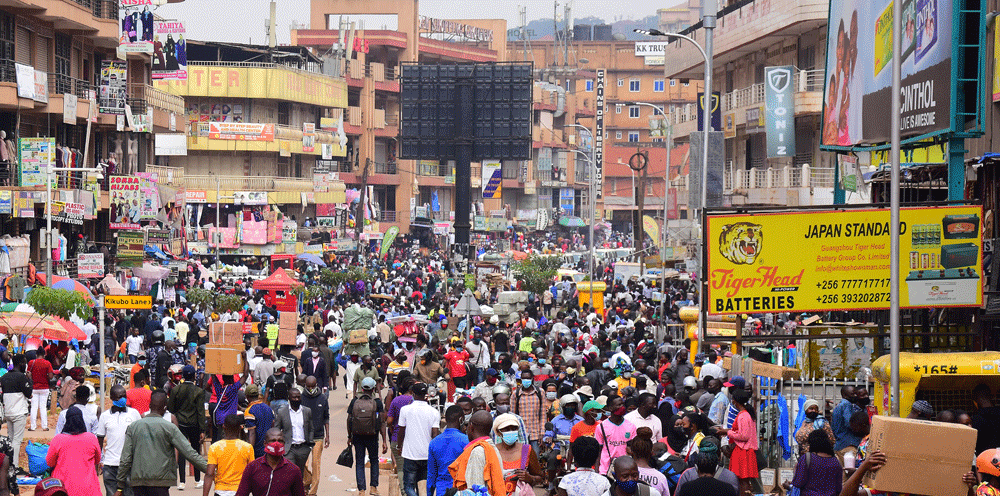Prime
Kampala to be among Africa’s top 20 most urbanised cities

The EIU report says that Kampala will be among the most urbanised cities by 2035. Photo / Michael Kakumirizi
What you need to know:
- Kampala, which as of 2023 was ranked at position 27th, is expected to leapfrog at least eight cities into 18th position by 2035
Kampala is projected to be among the top 20 most urbanised cities in Africa by 2035, according to the Economist Intelligence (EIU) report.
The report, authored by EIU, the research and analysis division of The Economist Group under the African Cities 2035 Rapid Urbanisation and Economic Expansion title, indicates that Kampala, as a middleweight city will grow at a faster pace, supported by infrastructure development and urbanisation, among others.
The report reviews 100 African cities clustered under established urban heavyweights and megacities, which include Cairo, Lagos, and Johannesburg, among others - projected to be at the head of the Africa100 city economies by 2035 - and middleweight cities such as Kampala, Kinshasa, Dar es Salaam, Addis Ababa, Abidjan, Dakar, and Kumasi - that will experience faster growth in the 11 years to 2035.
Kampala, which as of 2023 was at position 27th, is expected to leapfrog eight cities, including Kano (Nigeria), Algiers (Algeria), Dakar Region (Senegal), Ibadan (Nigeria), Rabat (Morocco), Yaoundé (Cameroon) and Port Harcourt (Nigeria), to 18th position.
The report also projects that Kampala’s gross domestic product will expand to at least $50b at a compound growth rate of above 9.6 percent by 2035, but will be lower than Dar es Salaam’s $80b (compound growth rate of 9 percent) and Nairobi’s $70b (compound growth rate of 5.6 percent).
Dar es Salaam, Kinshasa, and Nairobi, which complete the list of four large cities in East Africa, are ranked and will still rank above Kampala in position eighth, 11th, and 13th, respectively.
However, whereas Dar es Salaam and Kinshasa are projected to grow from the current positions of 15th and 14th, respectively, Nairobi will be leapfrogged by five cities to drop from eighth as of 2023.
The report also indicates that Uganda and Kenyan cities will, by 2035, form the Great Lakes megalopolis, joining the likes of Cairo and Alexandria in Egypt, the southern cluster in Gauteng in South Africa, and two separate clusters in Morocco and Algeria.
In West Africa, the metropolis cluster will stretch from Abidjan in Côte d’Ivoire to Lagos, Nigeria, which could become one of the world’s largest urban corridors by 2035.
A megalopolis is a group of metropolitan areas connected by common and shared systems.
Africa is projected to experience rapid urbanisation that will create more dynamic and wealthier consumer markets, better-connected and sophisticated commercial and distribution hubs, and larger bases for industrial production and trade operations.
The report also projects African cities to record the fastest rates of population growth, enhanced by geographical and demographical expansion that will be characterised by more skilled and better-educated residents, higher productivity levels and wage rates, higher-value business activities, and penetration of financial services, among others.
However, the report notes that authorities must find ways to mitigate associated urban challenges such as overcrowding, informal settlements, high unemployment, poor public services, stretched utility services, and exposure to climate change.
Mitigating measures
Asked how Kampala plans to mitigate some of the challenges highlighted in the report, Mr Vincent Byendaimira, the Kampala Capital City director for planning, said government was, finalising the Greater Kampala Metropolitan Area Physical Development Plan, covering the districts of Wakiso, Mukono and Mpigi, under which several projects such as an Outer Ring Road to improve Kampala’s connectivity, secondary centres (in Wakiso), railway connectivity and a Bus Rapid Transit system will be developed.




